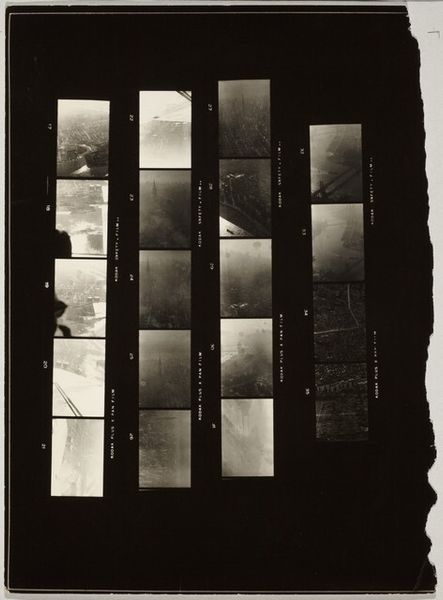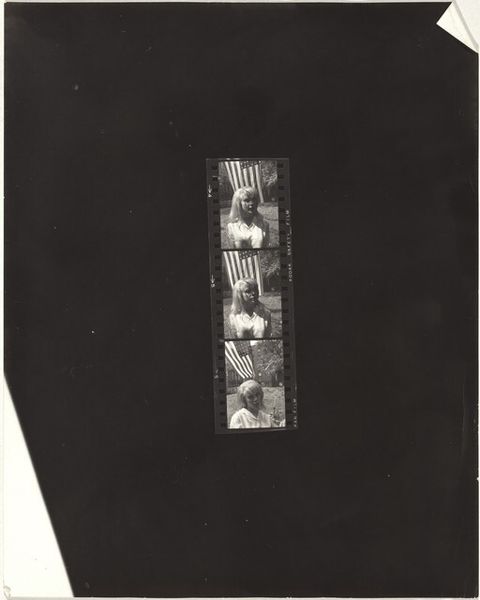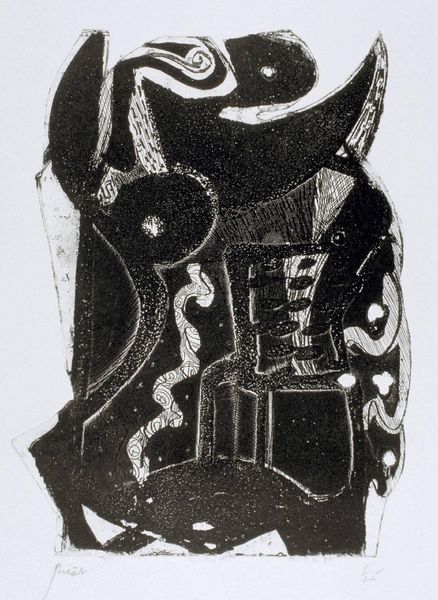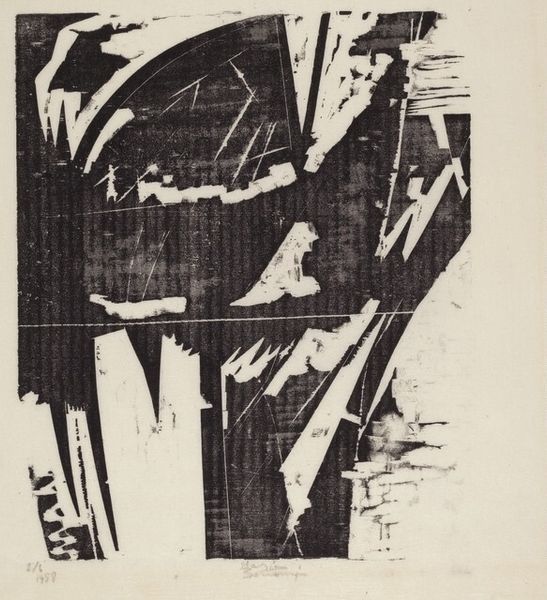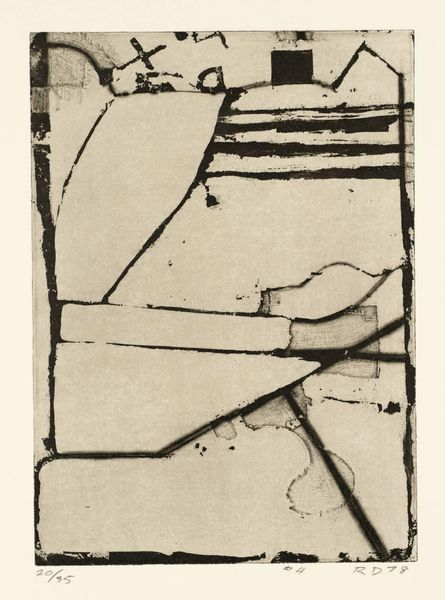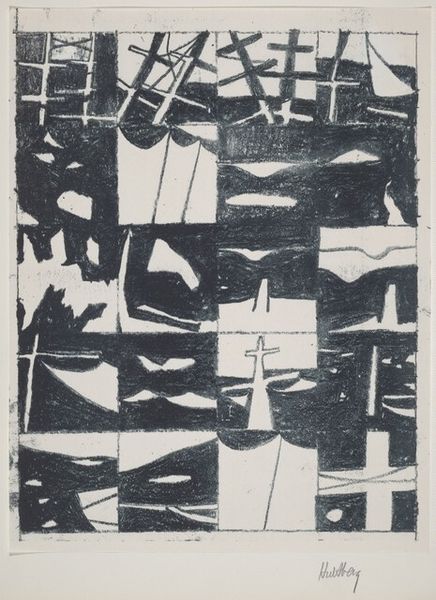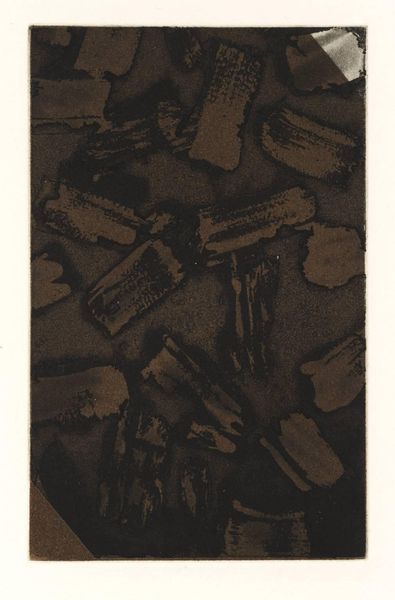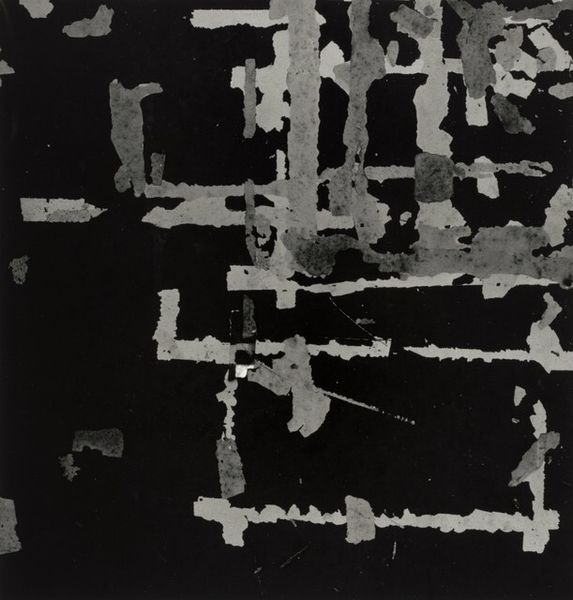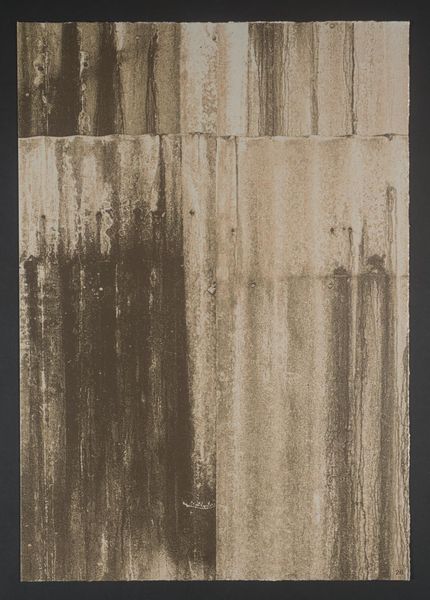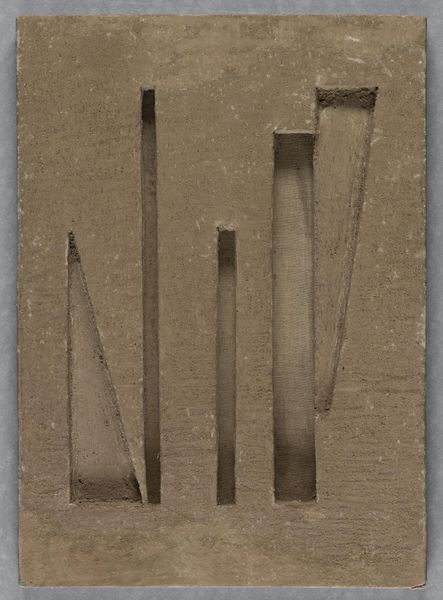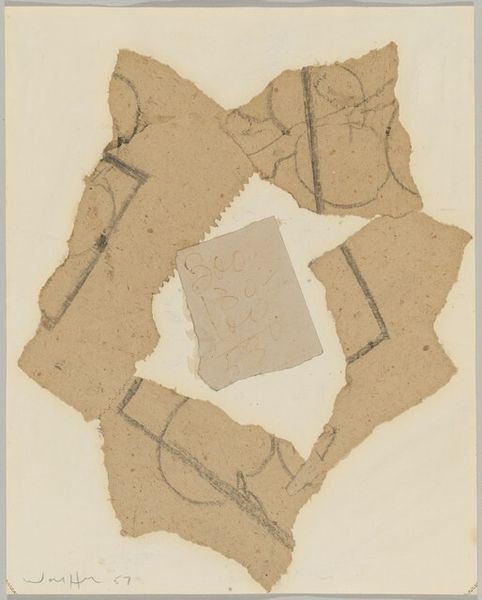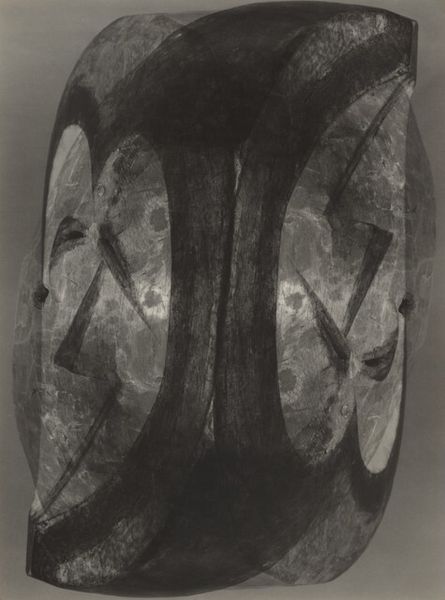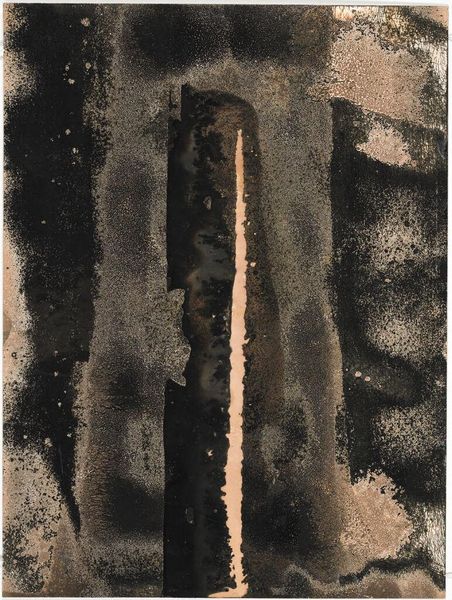
mixed-media, assemblage, stencil, sculpture, installation-art
#
mixed-media
#
contemporary
#
assemblage
#
stencil
#
sculpture
#
stencil
#
figuration
#
sculpture
#
abstract-art
#
installation-art
#
ceramic
#
abstract art
Copyright: Christian Boltanski,Fair Use
Curator: Christian Boltanski’s mixed-media piece, “Theatrical Composition,” dates from 1981. It seems an apt name, given its very stage-like presence. Editor: Gosh, it’s kind of spooky, isn't it? This suspended, puppet-like figure… all these separate cardboard pieces bolted together. It looks almost melancholic, a character waiting for a play that never begins. Curator: Precisely. Boltanski frequently explores themes of memory and loss in his art, often referencing historical events. This specific figure's construction speaks volumes. Consider the cardboard – a very humble, accessible material. What associations does it trigger? Editor: Immediately, fragility. But also, thinking about theatre, it's artifice. A constructed persona? It feels almost childlike, like a puppet from a homemade show, but something is definitely off, a disturbing twist. It seems suspended from the dark…is that a ceramic element as well? Curator: I see your point about childhood, but note that these materials aren’t "pristine," mass produced in perfect condition. Their rough edges and raw construction underscore Boltanski's broader commentary on the effects of history and time on personal identity, and yes that is some kind of clay effect being deployed, which could imply some kind of reference to archaic methods, like ancient statues. Editor: Time is really interesting. You’ve got those stiff joints too, adding to the marionette vibe. The bolts look like really obvious joints but don't make any natural moves, just robotic stiffness. As for the face-- It's a void. Like the figure has no clear persona to it, just raw material put to a simple design to perform. A soulless shape of what a man might look like in action. And yet, it sparks sadness. Maybe it's a lament for lost potential, perhaps a forgotten stage production, or lost to social production itself. Curator: Yes, the materials' properties point to wider social contexts. He challenges us to see value in the everyday and also implicates his audience in this play. Think of his method, how his sculptures involve stenciling, installation work, assemblage— techniques often associated with "lower" or less refined craft processes and trades rather than fine art traditions. Editor: That resonates deeply with its mood. It's not polished, perfected; it is a raw confession of something unfinished, uncertain. Curator: I think it's key, in summing up, to recognise how Boltanski's 'Theatrical Composition’ reframes our perception. He forces us to reassess what we consider artistically significant and reflect upon the narratives embedded within our own lived world and the items we use to navigate and represent it. Editor: For me, that haunting silhouette triggers such a strong emotional response. Its stark vulnerability resonates. The theatrical composition of fragile self versus immutable circumstance. It’s just like… whoa!
Comments
No comments
Be the first to comment and join the conversation on the ultimate creative platform.
